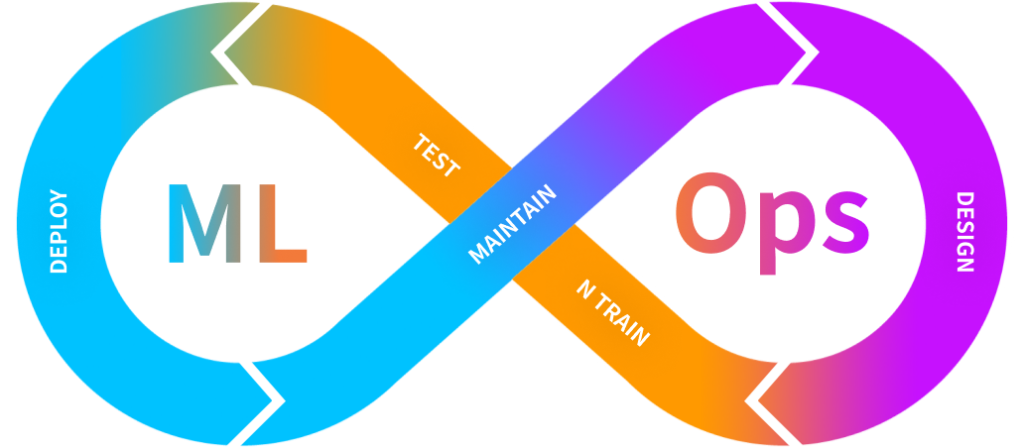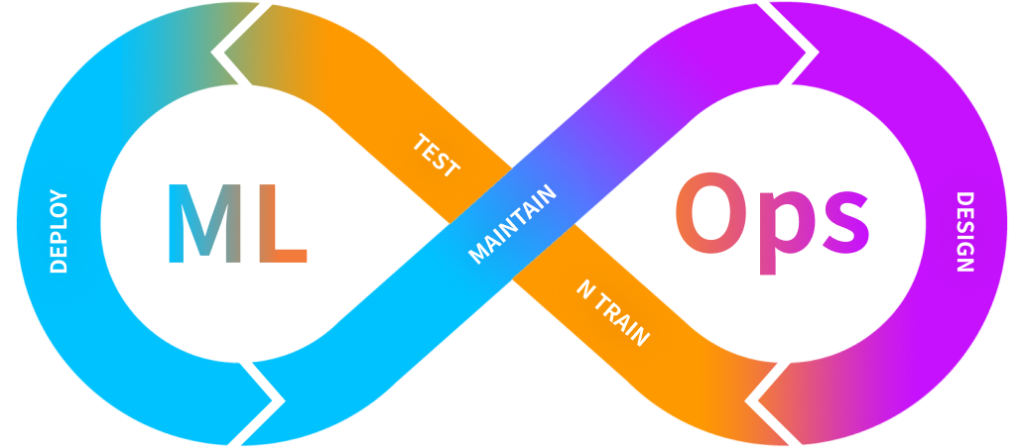
What is mlops?

MLOps stands for Machine Learning Operations. It is a set of practices that combines machine learning (ML) and DevOps (development and operations) to automate the entire machine learning lifecycle, from data preparation to model deployment and monitoring.
Why We need mlops?
MLOps plays a crucial role in the successful implementation of machine learning models in real-world scenarios. Here are a few reasons why MLOps is essential:
- Efficient Model Deployment: MLOps enables smooth and efficient deployment of machine learning models, ensuring that they work as intended and provide accurate results.
- Improved Collaboration: MLOps promotes collaboration between data scientists, machine learning engineers, and operations teams, facilitating seamless communication and knowledge sharing.
- Scalability and Reproducibility: MLOps allows for easy scalability of machine learning models and ensures reproducibility of results, making it easier to handle large datasets and complex models.
- Model Monitoring and Management: MLOps provides tools and techniques for monitoring and managing machine learning models in production, allowing for timely detection and resolution of issues.
What is the Advantage of mlops?
1. Enhanced model performance: MLOps ensures models are optimized and produce accurate results consistently.
2. Efficient deployment: MLOps automates deployment pipelines, reducing manual effort and deployment time.
3. Improved collaboration: MLOps facilitates collaboration between data scientists, developers, and IT operations, ensuring smooth workflows.
4. Scalability: MLOps enables the ability to scale models as data grows or business demands change.
5. Monitoring and maintenance: MLOps provides mechanisms to monitor model performance, detect anomalies, and apply necessary updates.
What is the feature of mlops?
- Continuous integration and continuous delivery (CI/CD): CI/CD is a software development practice that automates the process of building, testing, and deploying code. MLOps uses CI/CD to automate the machine learning lifecycle, from data preparation to model deployment.
- Monitoring: MLOps includes a monitoring system to track the performance of machine learning models in production. This helps to identify problems early on and take corrective action.
- Version control: MLOps uses version control to track changes to machine learning models and data. This helps to ensure that models can be easily reproduced and updated.
- Reproducibility: MLOps helps to ensure that machine learning models can be reproduced. This is important because it allows for debugging and auditing of models.
- Scalability: MLOps is designed to be scalable, so that it can be used to deploy machine learning models to large datasets.
What is the Top 10 Use cases of mlops?
Some popular use cases for MLOps include:
1. Fraud detection: Developing models to identify and prevent fraudulent activities.
2. Recommender systems: Building models that provide personalized recommendations to users.
3. Predictive maintenance: Developing models to predict equipment failures and schedule maintenance proactively.
4. Image recognition: Creating models for object recognition, facial recognition, etc.
5. Natural language processing: Developing models for sentiment analysis, chatbots, voice recognition, etc.
6. Anomaly detection: Building models to detect abnormal behavior or outliers in data.
7. Demand forecasting: Developing models to predict customer demand for better supply chain management.
8. Healthcare analytics: Utilizing models in medical diagnostics, patient monitoring, or drug discovery.
9. Energy consumption optimization: Using models to analyze patterns and optimize energy consumption.
10. Financial risk analysis: Developing models to assess and predict financial risks.
How to Implement mlops?
Implementing MLOps requires careful planning and execution. Here are the key steps involved in implementing MLOps:
- Define Goals and Objectives: Clearly define the goals and objectives of your MLOps implementation, considering the specific needs of your organization.
- Establish Cross-Functional Teams: Form cross-functional teams comprising data scientists, machine learning engineers, and operations personnel to facilitate collaboration.
- Data Management and Governance: Implement robust data management and governance practices to ensure the quality, security, and compliance of your data.
- Model Development and Deployment: Adopt best practices for model development and deployment, including version control, reproducibility, and continuous integration.
- Infrastructure and Environment Setup: Set up the necessary infrastructure and environments to support the development, testing, and deployment of machine learning models.
- Continuous Monitoring and Optimization: Implement tools and processes for continuous monitoring and optimization of deployed models, ensuring their performance and reliability.
- Documentation and Knowledge Sharing: Document all processes, tools, and decisions related to MLOps implementation, and encourage knowledge sharing among team members.
How to Get certified in mlops?
Here are some tips for getting certified in MLOps:
- Study for the exam. There are a number of resources available to help you study for the exam, such as books, online courses, and practice exams.
- Get hands-on experience. The best way to learn MLOps is by doing it. Build and deploy a machine learning model in production to get practical experience with the concepts and techniques involved in MLOps.
- Join the MLOps community. There are a number of online communities where you can connect with other MLOps professionals and learn from their experiences.
Visit these website for more updated related to online courses-
– DevOpsSchool.com
– scmGalaxy.com
– BestDevOps.com
– Cotocus.com
How to Learn mlops?

Learning MLOps requires a combination of theoretical knowledge and practical experience. Here are some steps to help you learn MLOps effectively:
- Gain Fundamentals: Start by learning the fundamentals of machine learning, DevOps, and cloud computing, as these are the building blocks of MLOps.
- Online Courses and Tutorials: Enroll in online courses and tutorials that specifically focus on MLOps, covering topics like model deployment, monitoring, and management.
- Hands-on Projects: Gain practical experience by working on MLOps projects, either individually or as part of a team, to apply the concepts learned in real-world scenarios.
- Community Engagement: Join online communities and forums dedicated to MLOps to engage with experts, ask questions, and learn from their experiences.
- Read Blogs and Books: Stay updated with the latest trends and best practices in MLOps by reading blogs, articles, and books written by industry experts.
- Attend Workshops and Conferences: Attend workshops and conferences related to MLOps to network with professionals and gain insights into industry trends.
- Continuous Learning: MLOps is a rapidly evolving field, so make sure to continuously learn and adapt to new technologies and methodologies.